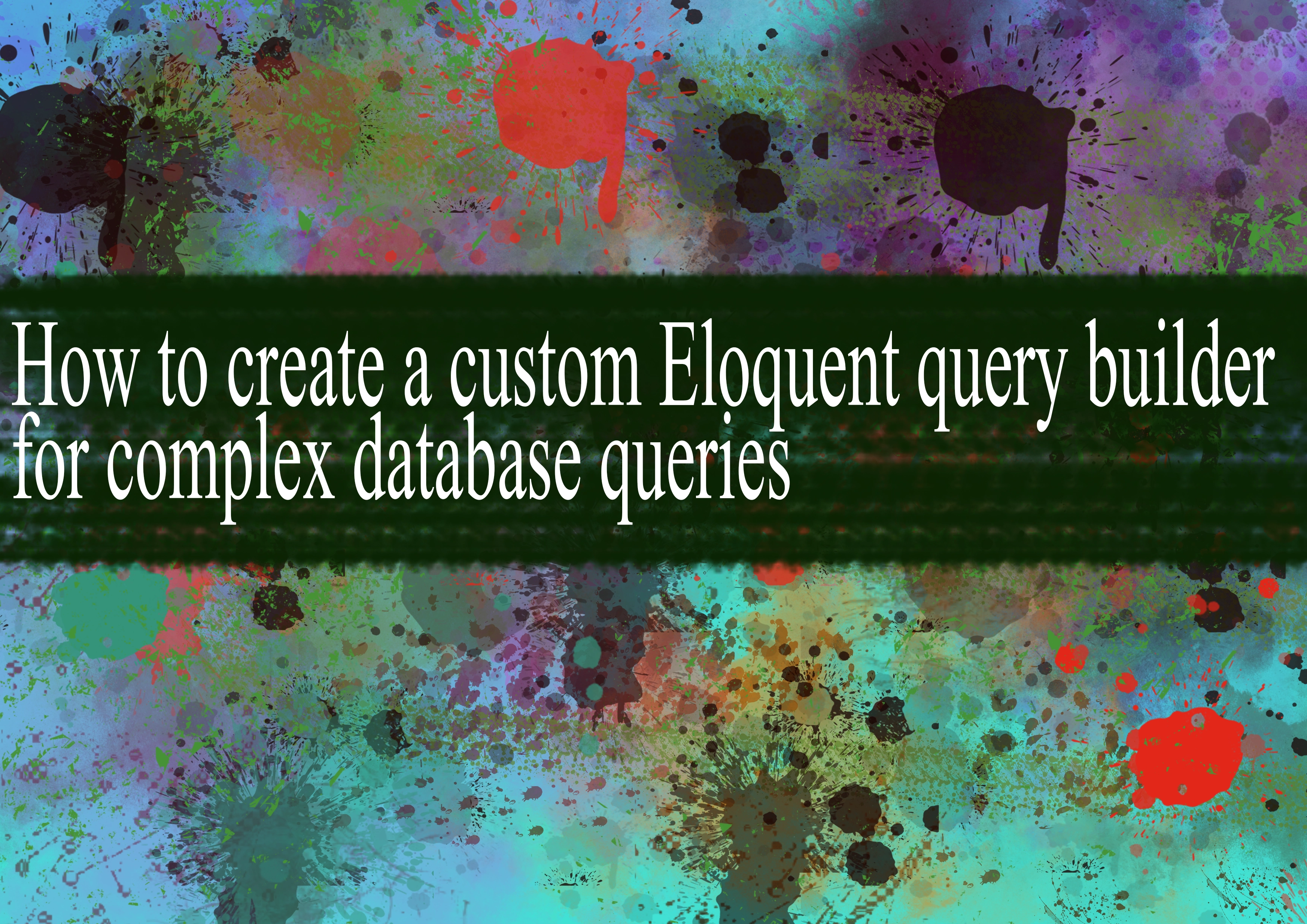How to create a custom Eloquent query builder for complex database queries

Creating a custom Eloquent query builder in Laravel can be a powerful way to handle complex database queries. This involves extending the base Eloquent query builder class and adding your own methods for specific query logic. Here's a step-by-step guide:
1. Create a New Eloquent Builder Class:
Create a new PHP file for your custom query builder, for example, CustomQueryBuilder.php. This file should be placed in a location that makes sense in your application structure.
php// app/QueryBuilders/CustomQueryBuilder.php
namespace App\QueryBuilders;
use Illuminate\Database\Eloquent\Builder;
class CustomQueryBuilder extends Builder
{
// Your custom methods will go here
}
2. Register the Custom Builder:
In your Eloquent model, override the newEloquentBuilder method to return an instance of your custom query builder.
php// app/YourModel.php
namespace App;
use App\QueryBuilders\CustomQueryBuilder;
class YourModel extends \Illuminate\Database\Eloquent\Model
{
protected function newEloquentBuilder($query)
{
return new CustomQueryBuilder($query);
}
}
3. Add Custom Methods:
Now you can add your custom methods to the CustomQueryBuilder class. These methods can encapsulate complex queries or additional logic you need.
php// app/QueryBuilders/CustomQueryBuilder.php
namespace App\QueryBuilders;
use Illuminate\Database\Eloquent\Builder;
class CustomQueryBuilder extends Builder
{
public function complexQuery()
{
return $this->where('column', '=', 'value')
->orWhere('another_column', '>', 100)
// Add your complex query logic here
->orderBy('created_at', 'desc');
}
// Add more custom methods as needed
}
4. Use the Custom Builder in Your Code:
Now you can use your custom query builder in your code by calling the methods you defined.
php$customResults = YourModel::complexQuery()->get();
Additional Resource Links:
- Laravel Eloquent Documentation: The official documentation for Laravel's Eloquent ORM.
- Laravel Query Builder Documentation: Learn more about building queries using Laravel's query builder.
- Laracasts Eloquent Techniques: Laracasts provides video tutorials, and this series specifically covers Eloquent techniques.
Remember to adjust version numbers in the URLs based on the Laravel version you are using. Always refer to the official documentation for the most accurate and up-to-date information.
-
Popular Post
- How to optimize for Google's About This Result feature for local businesses
- How to implement multi-language support in an Express.js application
- How to handle and optimize for changes in mobile search behavior
- How to handle CORS in a Node.js application
- How to use Vue.js with a UI framework (e.g., Vuetify, Element UI)
- How to configure Laravel Telescope for monitoring and profiling API requests
- How to create a command-line tool using the Commander.js library in Node.js
- How to implement code splitting in a React.js application
- How to use the AWS SDK for Node.js to interact with various AWS services
- How to use the Node.js Stream API for efficient data processing
- How to implement a cookie parser middleware in Node.js
- How to implement WebSockets for real-time communication in React
-
Latest Post
- How to implement a dynamic form with dynamic field styling based on user input in Next.js
- How to create a custom hook for handling user interactions with the browser's device motion in Next.js
- How to create a custom hook for handling user interactions with the browser's battery status in Next.js
- How to implement a dynamic form with dynamic field visibility based on user input in Next.js
- How to implement a dynamic form with real-time collaboration features in Next.js
- How to create a custom hook for handling user interactions with the browser's media devices in Next.js
- How to use the useSWRInfinite hook for paginating data with a custom loading indicator in Next.js
- How to create a custom hook for handling user interactions with the browser's network status in Next.js
- How to create a custom hook for handling user interactions with the browser's location in Next.js
- How to implement a dynamic form with multi-language support in Next.js
- How to create a custom hook for handling user interactions with the browser's ambient light sensor in Next.js
- How to use the useHover hook for creating interactive image zoom effects in Next.js